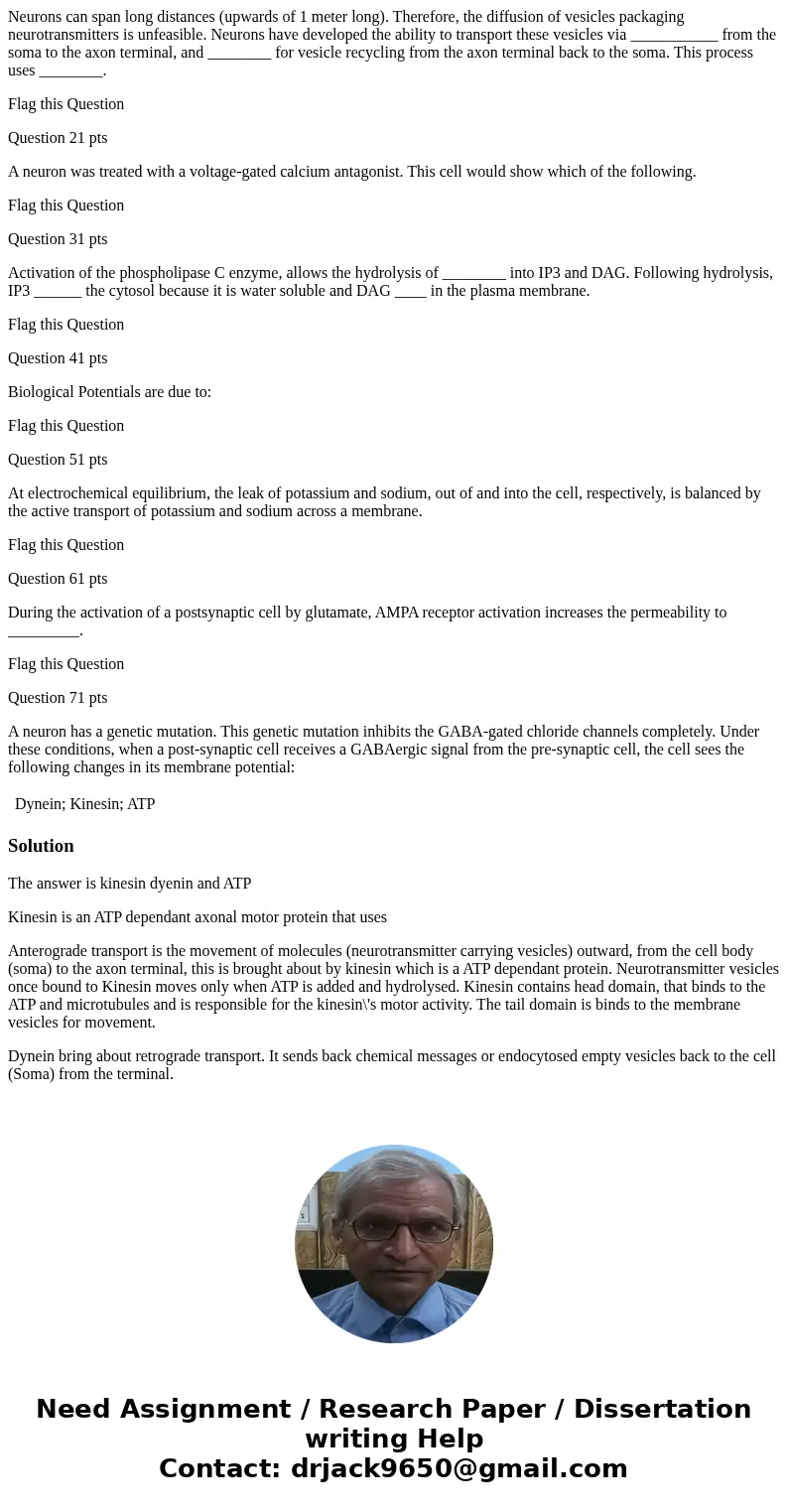Neurons can span long distances upwards of 1 meter long Ther
Neurons can span long distances (upwards of 1 meter long). Therefore, the diffusion of vesicles packaging neurotransmitters is unfeasible. Neurons have developed the ability to transport these vesicles via ___________ from the soma to the axon terminal, and ________ for vesicle recycling from the axon terminal back to the soma. This process uses ________.
Flag this Question
Question 21 pts
A neuron was treated with a voltage-gated calcium antagonist. This cell would show which of the following.
Flag this Question
Question 31 pts
Activation of the phospholipase C enzyme, allows the hydrolysis of ________ into IP3 and DAG. Following hydrolysis, IP3 ______ the cytosol because it is water soluble and DAG ____ in the plasma membrane.
Flag this Question
Question 41 pts
Biological Potentials are due to:
Flag this Question
Question 51 pts
At electrochemical equilibrium, the leak of potassium and sodium, out of and into the cell, respectively, is balanced by the active transport of potassium and sodium across a membrane.
Flag this Question
Question 61 pts
During the activation of a postsynaptic cell by glutamate, AMPA receptor activation increases the permeability to _________.
Flag this Question
Question 71 pts
A neuron has a genetic mutation. This genetic mutation inhibits the GABA-gated chloride channels completely. Under these conditions, when a post-synaptic cell receives a GABAergic signal from the pre-synaptic cell, the cell sees the following changes in its membrane potential:
| Dynein; Kinesin; ATP |
Solution
The answer is kinesin dyenin and ATP
Kinesin is an ATP dependant axonal motor protein that uses
Anterograde transport is the movement of molecules (neurotransmitter carrying vesicles) outward, from the cell body (soma) to the axon terminal, this is brought about by kinesin which is a ATP dependant protein. Neurotransmitter vesicles once bound to Kinesin moves only when ATP is added and hydrolysed. Kinesin contains head domain, that binds to the ATP and microtubules and is responsible for the kinesin\'s motor activity. The tail domain is binds to the membrane vesicles for movement.
Dynein bring about retrograde transport. It sends back chemical messages or endocytosed empty vesicles back to the cell (Soma) from the terminal.

 Homework Sourse
Homework Sourse